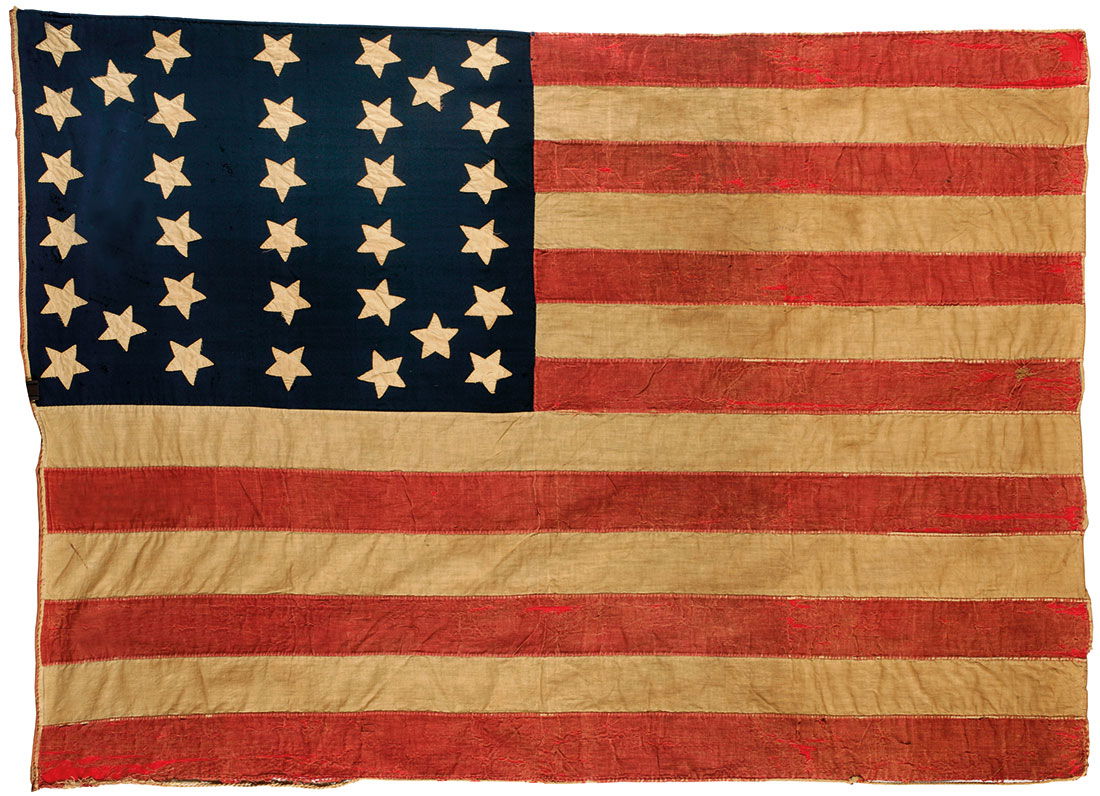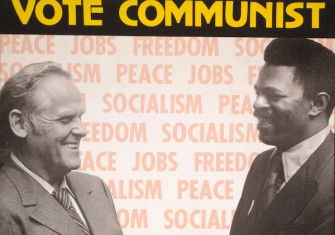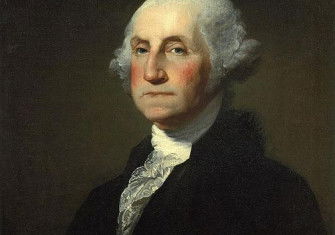‘These Truths’ by Jill Lepore review
These Truths: a History of the United States by Jill Lepore is a reminder of how tenaciously previous generations have clung to the view that the country is the ‘last, best hope of earth’.
 One of the ways in which the current President of the United States differs from all his predecessors, from George Washington to Barack Obama, is that unlike them he does not speak of his country’s special mission. When Donald Trump talks about making America ‘great’ again, he means only aggrandisement and enrichment, of being the biggest bully on the block in an endless, purposeless jostling and scrapping of nations. What he does not mean is progress toward a providentially ordained goal, a ceaseless quest to live up to the meaning of the American creed. In a most un-American way, he does not think history has a direction.
One of the ways in which the current President of the United States differs from all his predecessors, from George Washington to Barack Obama, is that unlike them he does not speak of his country’s special mission. When Donald Trump talks about making America ‘great’ again, he means only aggrandisement and enrichment, of being the biggest bully on the block in an endless, purposeless jostling and scrapping of nations. What he does not mean is progress toward a providentially ordained goal, a ceaseless quest to live up to the meaning of the American creed. In a most un-American way, he does not think history has a direction.
There have been other deniers of the American project in the past, though none of them became president. There were, for example, the ‘America First’ campaigners who were willing to accommodate the US to a Nazi-dominated world, the Indiana senator who sneered that Thomas Jefferson’s Declaration of Independence contained not ‘self-evident truths’ but ‘self-evident lies’ and the pro-slavery Southerner, quoted by Jill Lepore, who thought the ‘world had not improved in the last two thousand, probably four thousand years’. It is enough, perhaps, simply to quote these words to remind ourselves that such expressions have been the outliers in the American political tradition. And Lepore’s magnificent book explains why that is so.
This is the wisest and most readable narrative history of the United States to have been written in decades. At the same time, it is a reminder of how tenaciously previous generations have clung to the view that the US is the ‘last, best hope of earth’, in Abraham Lincoln’s phrase.
‘These truths’ was Jefferson’s term for the assertions, moral claims or (as Lincoln recast them) ‘propositions’ set out in the Declaration of Independence: that ‘all men’ are equal, that they have natural rights and that the only legitimate basis for government is popular sovereignty. For Lepore, what gives a shape and meaning to American history is the endless testing of and pursuit of these ‘truths’. In her telling, the past is filled with women and men with richly imagined, if clashing, visions of the future. This is what makes this book feel timely and necessary: it is, as she puts it, a ‘civics primer’ as well as a gripping story. That is not to imply that there is anything so crude as a call to action here; Lepore does not, thank goodness, end with a homily about the duties of citizens. Yet in its unapologetic telling of an American tale, this book reasserts a very old, if currently unfashionable, view that America matters to the world and that what happens there makes a difference, not just because of the country’s economic might, waning as it is, but because of the ideas on which it is founded.
Beginning in the 1960s there was a reaction against what was then called the ‘consensus’ school of American history, which emphasised the ‘liberal’ common ground uniting Americans across the generations. Even the Civil War, in this telling, was no more than a family quarrel. Richard Hofstadter, the ever-quotable Columbia University historian whose public profile as a brilliant essayist made him the Jill Lepore of his day, captured the essence of the ‘consensus’ view when he wrote that ‘it has been America’s fate not to have ideologies but to be one’. In other words, foreign ‘isms’ such as socialism could never really take root in American soil because they were crowded out by the power and adaptability of the idea of ‘America’ itself. The critique of the consensus school was that it mistook the rhetoric of self-interested elites for objective reality. It was tenable only if one downplayed racial conflict, overlooked the capitalist exploitation of workers, breezed past the repression of movements – whether labour unions or antiwar activists – which challenged the plutocratic hegemony. Americans have hewn to many ‘ideologies’ (however one defines that most imprecise of historical concepts). Even in less polarised times than the present, it seems a stretch to describe so cacophonous a culture as defined by ‘consensus’.
Lepore’s book certainly does not replicate the cosy canards of the ‘consensus’ school, but she has found a way of telling a story of conflict without losing sight of her protagonists’ constant search for common purpose. She reminds us that the ‘revolutionary’ character of the 18th-century American colonies lay not just in the high-pitched protests of silk-stockinged merchants and lawyers, but also in the constant challenges by enslaved Africans and Native American tribes to their subjugation by a government to which they had never given their consent. Her focus is unashamedly on politics – the index entry for ‘elections’ runs to half a column – yet few pages go by without Lepore reminding us that this was not, despite its top-down appearance, a polity consisting only of white men.
The brilliance of the book is to do justice to the fierce divisions of the American past while reclaiming the underlying truth captured by the ‘consensus’ historians: that belief in its own destiny has in itself shaped the country’s history.
This is a tale told with the verve of a great teacher, the modulated literary style of a high-class novelist and the generous, careful eye of a historian who treats her sources as precious artefacts not as subjects for plunder. Who else but Lepore, whose essays for the New Yorker are breathtakingly well-observed, would introduce Tom Paine as ‘the spitfire son of an English grocer’ or Huey Long as ‘wild-eyed and fist-stamping’?
Is it possible for so sublime a writer to get so carried away that her meaning becomes imprecise? Yes, very occasionally. The isolation of the Americas from the rest of the world ‘for hundreds of millions of years meant that diseases to which Europeans and Africans had built up immunities over the millennia were entirely new to the native peoples of the Americas’, she writes. Well, it was actually 20,000 years rather than hundreds of millions, but the point still stands. When writing on the Civil War, she invokes ‘giant armies wielding unstoppable machines, as if monsters with scales of steel had been let loose on the land to maul and maraud and eat even the innocent’. Well, it is true that this was the machine age, but this is more than a generous pinch of dramatic licence: there were no tanks in that war.
In the end, the metaphor that most stands out is the one that emerges so strongly from the historical voices she quotes: America as a ship on a stormy voyage. Would the worthy vessel founder on treacherous rocks or sail on? And today: will the crew manage to plot a course, or have they ‘lost sight of the horizon and their grasp on any compass’? In one of her most flowery, if just about forgiveable, passages, Lepore ends by speculating that to steer the ship through wind and wave, future generations will need to ‘forge an anchor in the glowing fire of their ideals’. She is an optimist, then. A believer. And, true to the ideals she writes about, that is what gives this book its power and its purpose.
- These Truths: a History of the United States
Jill Lepore
W.W. Norton
460pp £25
Adam Smith is Professor of United States History at University College London.






